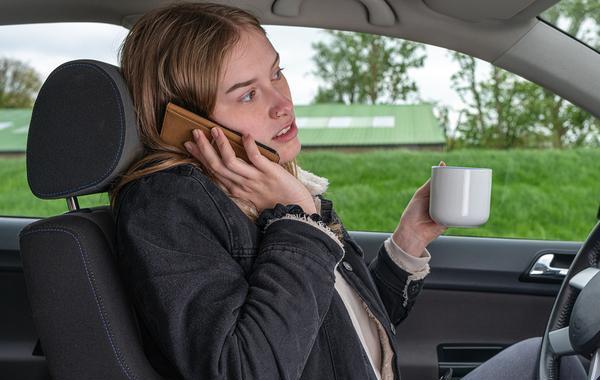When your kids are in elementary and middle school, you’re probably not thinking about the day they’ll get behind the wheel. But that day is coming sooner than you might expect, and there’s one important way you can start preparing them now: Teach them to use their phones and tablets responsibly.
An Epidemic Of Distraction
The problem is distracted driving. Distracted driving has three pieces: Visual, where your eyes leave the road; manual, when you remove a hand or hands from the wheel; and mental, when your mind is on something else. Any of the three can be dangerous, and smartphones can potentially combine all three.
And to be fair to the kids, the adults aren’t setting a good example. The CDC estimates that 9 people are killed and 1,000 people injured due to distracted driving every single day of the year, and a study by the National Highway Transportation Safety Administration found that while only 1% to 2% of us text behind the wheel with any regularity, a shocking one in ten of us takes phone calls while driving. Keep in mind, chatting with a passenger also qualifies as distracted driving, so this is like constantly having a chatty someone in the next seat, waiting to pipe up at the wrong moment.
Fortunately, we can stop making these mistakes, and teach our kids not to make them in the first place.

Focusing On The Task
Lead by example, when it comes to distracted driving. Set your phone to “Do Not Disturb” when you drive, and have a family rule that you’ll send a text to anybody in the family who might try to call that you’ll be driving and unavailable. If you do need to make a call, use a hands-free set or a voice assistant, and keep the call short.
Set rules beyond the road as well. Parental control apps can allow you to set rules such as no phone usage at dinner, or only limited uses during certain times of day where kids need to focus, like at school. You can do likewise by setting your phone to silent and leaving it in the other room.
When distraction becomes an issue, don’t just take the phone away, or use your parental control app’s instant pause feature. Sit kids down, explain what the problem is and make sure that they understand why, exactly, you’re concerned. Make it clear that they can earn back the privilege of phone time if they can prove they won’t be distracted, and block problem apps in the meantime.
For teens who are about to learn to drive, make it standard that they put their phones in Do Not Disturb and ensure that messaging apps and other distractions are muted. You may want to have them configure their settings so messaging apps don’t drop notifications on top of maps and other driving apps, so they’re not tempted to pick up the phone.
Distracted driving is the next frontier of safety behind the wheel, but kids don’t have to get lost in it. With responsible phone usage and the right mix of rules and parental control apps, kids can build a healthy and responsible relationship with their phones. To learn more about how parental control apps can help, try Screen Time for free.


Join the conversation